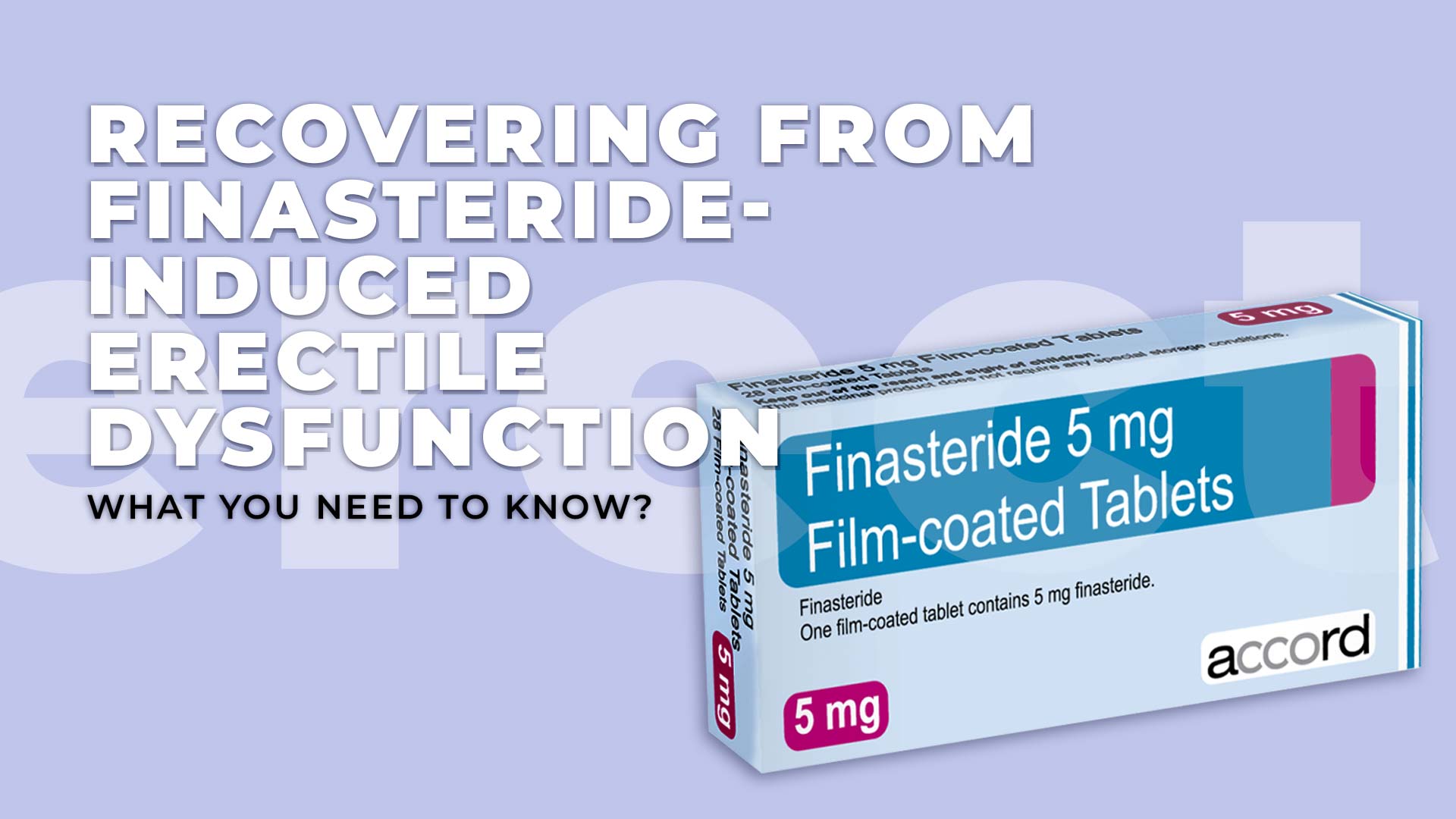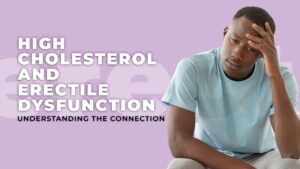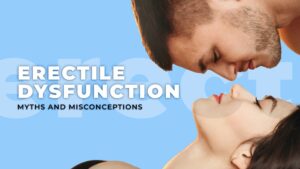Hair loss can be a distressing experience for many men. For those seeking a solution, the drug finasteride, also known as Propecia, has been a popular choice. While it can effectively slow or stop hair loss, a potential side effect that has become a growing concern is erectile dysfunction (ED). The possibility of experiencing sexual side effects can be a significant worry for men taking finasteride. It’s essential to understand the relationship between the drug and ED, as well as the options available to address it.
This article explores the finasteride erectile dysfunction recovery, potential underlying mechanisms, and what can be done to manage this side effect.
What is Finasteride? How Does It Work?

Finasteride is a medication used for treating prostate enlargement and male pattern baldness. It belongs to a class of drugs known as 5-α reductase inhibitors. The dose of finasteride is usually determined based on the condition and its severity, with options being 1mg or 5mg.
Finasteride works by inhibiting the conversion of testosterone into dihydrotestosterone (DHT) by using an enzyme called 5-α reductase. This helps to normalize hair growth and prevent further prostate growth in people with BPH.
However, since finasteride inhibits DHT, which plays a role in various bodily functions, it can lead to side effects. These include sexual side effects like the development of ED, which occur because of the reduced levels of DHT.
Can Finasteride Cause Erectile Dysfunction?
Finasteride is associated with side effects, including sexual ones. According to several studies, there is a link between finasteride and erectile dysfunction (ED). ED is a condition that involves difficulties with getting or maintaining an erection. Other sexual side effects associated with finasteride include low sex drive and difficulty ejaculating.
The effects of finasteride on DHT and testosterone are thought to be responsible for the development of ED in some men who take the medication. However, some studies have reported conflicting results. DHT is believed to be more effective than testosterone in preserving nitric oxide production in the corpus cavernosum. Additionally, finasteride appears to impact penile smooth muscle and neurons directly.
While not all men who use finasteride have side effects, a few may experience erectile dysfunction. There is some disagreement between studies on the frequency of ED as a side effect of finasteride and whether it persists in the long term.
However, data from various studies suggest that around 3-8% of men on any dose of finasteride may have erectile dysfunction caused by the drug. This side effect is more common in men over 50 years old.
Persistent erectile dysfunction is even less common, affecting only about 1-2% of men. Its duration can vary widely, from weeks to months or even a year or longer. However, this is a subject of active research, and some experts do not agree on the persistence of ED.
Several factors can influence the likelihood of developing ED while taking finasteride. Older men are more likely to experience sexual dysfunction while taking the medication. Some researchers think that a bad diet and not exercising enough might add to ED when taking finasteride. But there isn’t much evidence to support this idea, and these factors aren’t seen as direct causes of ED.
Side Effects of Finasteride
The primary side effects of finasteride are related to sexual function. These effects consist of erectile dysfunction,
- low sex drive,
- difficulty ejaculating,
- reductions in sperm count,
- gynecomastia, and
- testicular pain.
There are also some less frequent side effects, such as
- allergic reactions that may cause tingling,
- itching,
- swollen lips and face, and
- depression or suicidal thoughts
that may affect younger people (although this is subject to ongoing debate and currently not fully understood).
In rare cases, severe side effects can occur. This includes male breast cancer, although there is debate over whether there is a genuine link. Several high-quality studies have not found an association.
Additionally, there may be a slightly increased risk of higher-grade prostate cancer. Although this may be due to detection bias. It is worth noting that finasteride does not raise the chance of developing prostate cancer; in fact, it may lower the risk.
Finasteride Side Effects in Women
Finasteride is generally not prescribed to women, except in rare cases of female pattern hair loss. While the drug is well tolerated in females, there are potential side effects that should be noted, including:
- the possibility of congenital disorders if taken during pregnancy
- stomach pain and digestive discomfort
- reduced sex drive
How to Reduce the Side Effects of Finasteride

Experiencing side effects from finasteride can significantly impact your quality of life. There are several strategies that can help alleviate them. Here are some ways to reduce finasteride’s side effects:
- Adjusting your dose: If you are experiencing side effects from a high dose of finasteride (5mg), consult your doctor about lowering your dosage. However, this may not be feasible in all cases, depending on your medical condition, so follow your doctor’s advice.
- Avoiding NSAIDs: Over-the-counter medications like Advil or Motrin, when combined with finasteride, may increase the risk of ED. Speak with your doctor to find out about alternative options.
- Changing your lifestyle: A bad diet, too much alcohol, and not enough exercise can make the side effects of finasteride worse, especially the sexual ones. A diet rich in fruits and vegetables and low in saturated fat and salt, as well as moderate exercise, can help. Moreover, factors like obesity are closely linked to sexual side effects like ED.
It’s worth noting that erectile dysfunction caused by finasteride is treatable. Typically, a medication called a phosphodiesterase type 5 (PDE5) inhibitor is prescribed. These can include sildenafil (Cenforce) or tadalafil (Cialis). If PDE5 inhibitors prove to be ineffective, your doctor may suggest more invasive treatments. These may include the use of intraurethral suppositories or penile injections of medication. These treatments are only utilized in rare and extreme cases of erectile dysfunction.
Can Finasteride Side Effects Be Reversed After Discontinuation?
As with most prescription drugs, finasteride carries a risk of side effects. Sexual dysfunction is one of the most commonly reported side effects among men who take finasteride.
Luckily, most people who have sexual side effects from finasteride find that these effects usually go away after a while. Most men who experience side effects notice that these effects cease after they stop using the medication.
There have been reports of a small number of men who continue to experience side effects even after they have stopped taking the drug, including ED. It should be noted that research on the effects of finasteride is ongoing.
Recovery Time from ED Caused by Finasteride
The time it takes to recover from erectile dysfunction caused by finasteride can vary. It depends on individual factors. Some men may recover quickly, while others may require treatment and more time to recover. However, persistent ED is rare, but for those who do experience this side effect, it can last for several months or even years in some cases. Fortunately, treatment options are available.
It is worth noting that the risk of developing sexual side effects such as ED may be lower for men who take finasteride for a shorter period of time. Research on animals and humans found that the recovery time from finasteride-induced ED differs based on treatment length.
While recovery may take time, there are certain factors that can aid in the treatment of ED, such as maintaining a healthy diet and regular exercise.
Is Finasteride Safe for Long-Term Use?
If your goal is to prevent hair loss and maintain as much hair as possible, you will need to take finasteride daily for a prolonged period. The medication only works while it’s active in your body. For many men, this means taking finasteride for several years. However, long-term studies indicate that finasteride treatment is safe.
A study of nearly 19,000 men who took finasteride for seven years showed minimal long-term concerns. Similarly, other long-term studies of finasteride show that a 1mg dose of the medication is well tolerated for up to five years.
There have been reports of a slightly increased risk of high-grade prostate cancer (1.8% with a 5mg finasteride dosage versus 1.0% placebo) for men over 55 years old. However, this is at a much higher dosage (5mg versus 1mg) than what is typically prescribed for hair loss.
What Happens if You Stop Taking Finasteride?
If you stop using finasteride, your hair will fall out again, like before you started the medication. Once you stop taking finasteride, the rate of hair loss will go back to how it was before.
If you experience physical or sexual side effects from finasteride these effects usually go away when you stop taking the medicine. This is shown in many studies that looked at its side effects.
Moreover, consult with your healthcare provider if you encounter any side effects or are anxious about developing them.
Risks Involving Women, Children & Pregnancy
The FDA cautions that finasteride is not suitable for use in children and women. If a pregnant woman takes finasteride, the drug may result in malformations of the male fetus’s external genitalia. This is because finasteride inhibits DHT, which is essential for the normal development of male genitalia.
The label on Propecia says that pregnant women or women who might get pregnant should not touch crushed or broken tablets. This could potentially harm a male fetus.
In female rats, the administration of low doses of finasteride during pregnancy has caused abnormalities in male offspring’s external genitalia. These include decreased prostatic and seminal vesicular weights, delayed preputial separation, and transient nipple development.
Alternatives to Finasteride
If you are concerned about Finasteride’s side effects or want a better hair loss remedy, consider these options.
One option is to explore other prescription medications, such as Dutasteride. It operates similarly to Finasteride by blocking DHT. However, if you prefer to minimize the risk of experiencing sexual side effects, topical treatments like Minoxidil may be a better choice. It does not affect hormone levels.
When to Call A Doctor?

If you encounter any severe side effects caused by Finasteride, such as an allergic reaction, seek medical attention. Untreated severe allergic reactions may pose life-threatening risks.
If you experience other side effects, such as severe depression and suicidal thoughts, consult your doctor as soon as possible. Mental health symptoms can be effectively managed.
Furthermore, if you observe indications of male breast or prostate cancer, visit your doctor immediately.
Signs of male breast cancer include
- a lump in the chest region,
- sore breast tissue, and
- nipple pain or discharge.
Symptoms of prostate cancer may include
- difficulty urinating,
- pain during urination, and
- blood in the urine.
These side effects are relatively rare, but early detection is critical.
Seek medical attention from your doctor if you are suffering from ED, whether or not it’s related to finasteride. ED can be an indication of other health concerns such as heart conditions or high blood pressure. Your doctor can provide valuable advice and treatment to help manage erectile dysfunction.
Many side effects of Finasteride can be mitigated with suitable solutions, and your doctor can assist you with that.
Takeaway
Finasteride is a drug that is used to treat male-pattern baldness and prostate enlargement. However, the medication has been associated with several sexual side effects. In the case of erectile dysfunction, the side effect is usually temporary and short-lived. It typically ceases after discontinuing the drug.
Nevertheless, some men may take more time to recover, and treatment may be necessary. It’s worth noting that younger men and men who take the medication for a shorter duration are less likely to experience this side effect.
References
- Shin YS, Karna KK, Choi BR, Park JK. Finasteride and Erectile Dysfunction in Patients with Benign Prostatic Hyperplasia or Male Androgenetic Alopecia. World J Mens Health. 2019 May;37(2):157-165. doi: 10.5534/wjmh.180029. Epub 2018 Aug 10. PMID: 30209896; PMCID: PMC6479090. https://wjmh.org/DOIx.php?id=10.5534/wjmh.180029
- Fertig RM, Gamret AC, Darwin E, Gaudi S. Sexual side effects of 5-α-reductase inhibitors finasteride and dutasteride: A comprehensive review. Dermatol Online J. 2017 Nov 11;23(11):13030/qt24k8q743. PMID: 29447628. https://pubmed.ncbi.nlm.nih.gov/29447628/
- Unger JM, Till C, Thompson IM Jr, Tangen CM, Goodman PJ, Wright JD, Barlow WE, Ramsey SD, Minasian LM, Hershman DL. Long-term Consequences of Finasteride vs Placebo in the Prostate Cancer Prevention Trial. J Natl Cancer Inst. 2016 Aug 26;108(12):djw168. doi: 10.1093/jnci/djw168. PMID: 27565902; PMCID: PMC5241895. https://academic.oup.com/jnci/article/108/12/djw168/2706930?login=false
- Finasteride Male Pattern Hair Loss Study Group. Long-term (5-year) multinational experience with finasteride 1 mg in the treatment of men with androgenetic alopecia. Eur J Dermatol. 2002 Jan-Feb;12(1):38-49. PMID: 11809594. https://pubmed.ncbi.nlm.nih.gov/11809594/
- Sung HH, Yu J, Kang SJ, Chae MR, So I, Park JK, Lee SW. Persistent Erectile Dysfunction after Discontinuation of 5-Alpha Reductase Inhibitor Therapy in Rats Depending on the Duration of Treatment. World J Mens Health. 2019 May;37(2):240-248. doi: 10.5534/wjmh.180082. Epub 2018 Dec 26. PMID: 30588787; PMCID: PMC6479083. https://wjmh.org/DOIx.php?id=10.5534/wjmh.180082
- Elkelany OO, Owen RC, Kim ED. Combination of tadalafil and finasteride for improving the symptoms of benign prostatic hyperplasia: critical appraisal and patient focus. Ther Clin Risk Manag. 2015 Mar 30;11:507-13. doi: 10.2147/TCRM.S80353. PMID: 25848297; PMCID: PMC4386768. https://www.dovepress.com/combination-of-tadalafil-and-finasteride-for-improving-the-symptoms-of-peer-reviewed-fulltext-article-TCRM
- Lee SW, Juhasz M, Mobasher P, Ekelem C, Mesinkovska NA. A Systematic Review of Topical Finasteride in the Treatment of Androgenetic Alopecia in Men and Women. J Drugs Dermatol. 2018 Apr 1;17(4):457-463. PMID: 29601622; PMCID: PMC6609098. https://pubmed.ncbi.nlm.nih.gov/29601622/
- Ludwig W, Phillips M: Organic Causes of Erectile Dysfunction in Men Under 40. Urol Int 2014;92:1-6. doi: 10.1159/000354931 https://www.karger.com/Article/FullText/354931#










Leave a reply